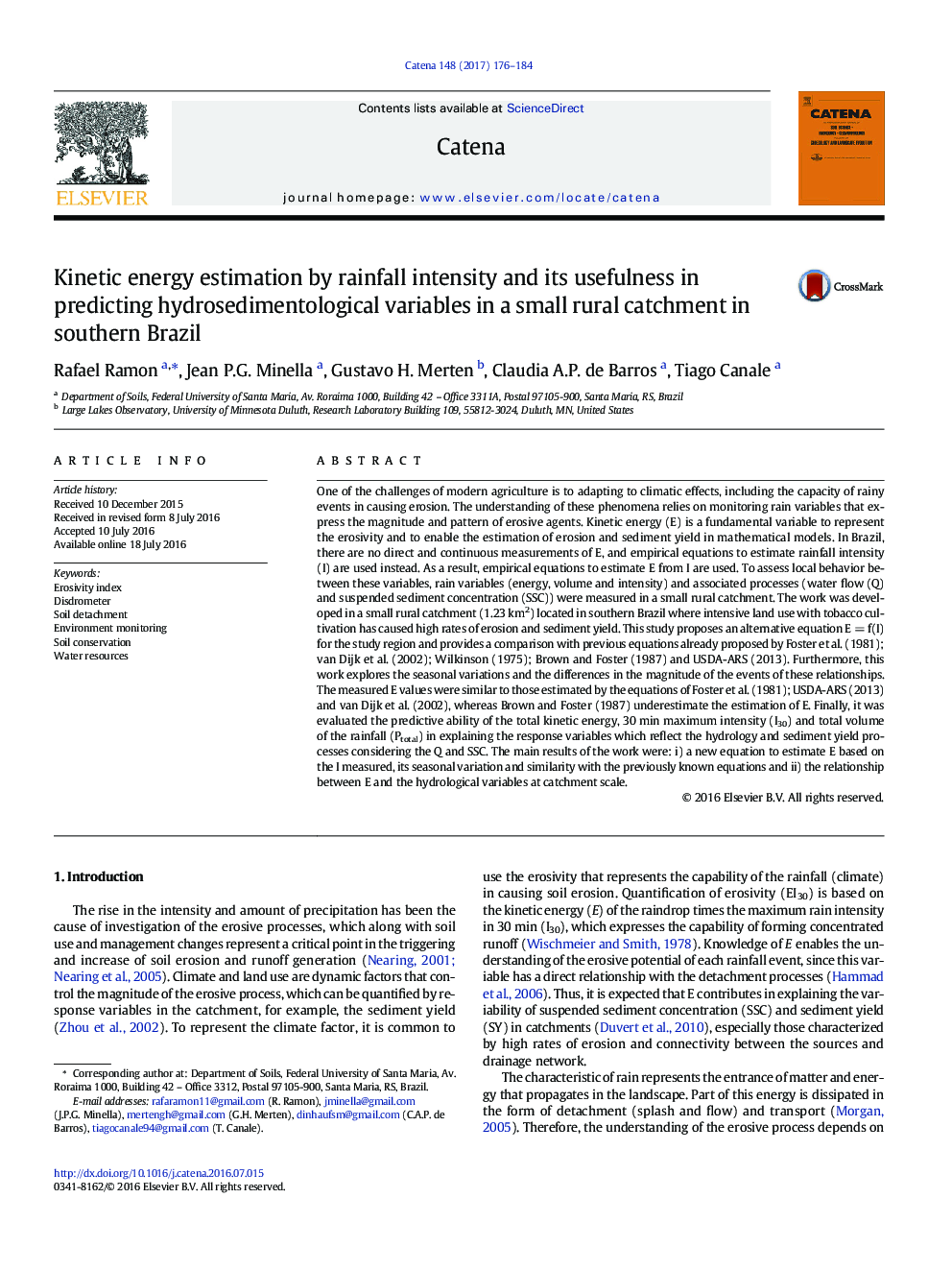| کد مقاله | کد نشریه | سال انتشار | مقاله انگلیسی | نسخه تمام متن |
|---|---|---|---|---|
| 5770205 | 1413276 | 2017 | 9 صفحه PDF | دانلود رایگان |
- With the use of a disdrometer, the kinetic energy of the rainfall was measured.
- An estimation of energy based on rainfall intensity is proposed for Southern Brazil.
- The rainfall magnitude and season has small effect in the kinetic energy estimation.
- The kinetic energy contributes to explain the hydrological variables in the catchment.
One of the challenges of modern agriculture is to adapting to climatic effects, including the capacity of rainy events in causing erosion. The understanding of these phenomena relies on monitoring rain variables that express the magnitude and pattern of erosive agents. Kinetic energy (E) is a fundamental variable to represent the erosivity and to enable the estimation of erosion and sediment yield in mathematical models. In Brazil, there are no direct and continuous measurements of E, and empirical equations to estimate rainfall intensity (I) are used instead. As a result, empirical equations to estimate E from I are used. To assess local behavior between these variables, rain variables (energy, volume and intensity) and associated processes (water flow (Q) and suspended sediment concentration (SSC)) were measured in a small rural catchment. The work was developed in a small rural catchment (1.23Â km2) located in southern Brazil where intensive land use with tobacco cultivation has caused high rates of erosion and sediment yield. This study proposes an alternative equation EÂ =Â f(I) for the study region and provides a comparison with previous equations already proposed by Foster et al. (1981); van Dijk et al. (2002); Wilkinson (1975); Brown and Foster (1987) and USDA-ARS (2013). Furthermore, this work explores the seasonal variations and the differences in the magnitude of the events of these relationships. The measured E values were similar to those estimated by the equations of Foster et al. (1981); USDA-ARS (2013) and van Dijk et al. (2002), whereas Brown and Foster (1987) underestimate the estimation of E. Finally, it was evaluated the predictive ability of the total kinetic energy, 30Â min maximum intensity (I30) and total volume of the rainfall (Ptotal) in explaining the response variables which reflect the hydrology and sediment yield processes considering the Q and SSC. The main results of the work were: i) a new equation to estimate E based on the I measured, its seasonal variation and similarity with the previously known equations and ii) the relationship between E and the hydrological variables at catchment scale.
Journal: CATENA - Volume 148, Part 2, January 2017, Pages 176-184
